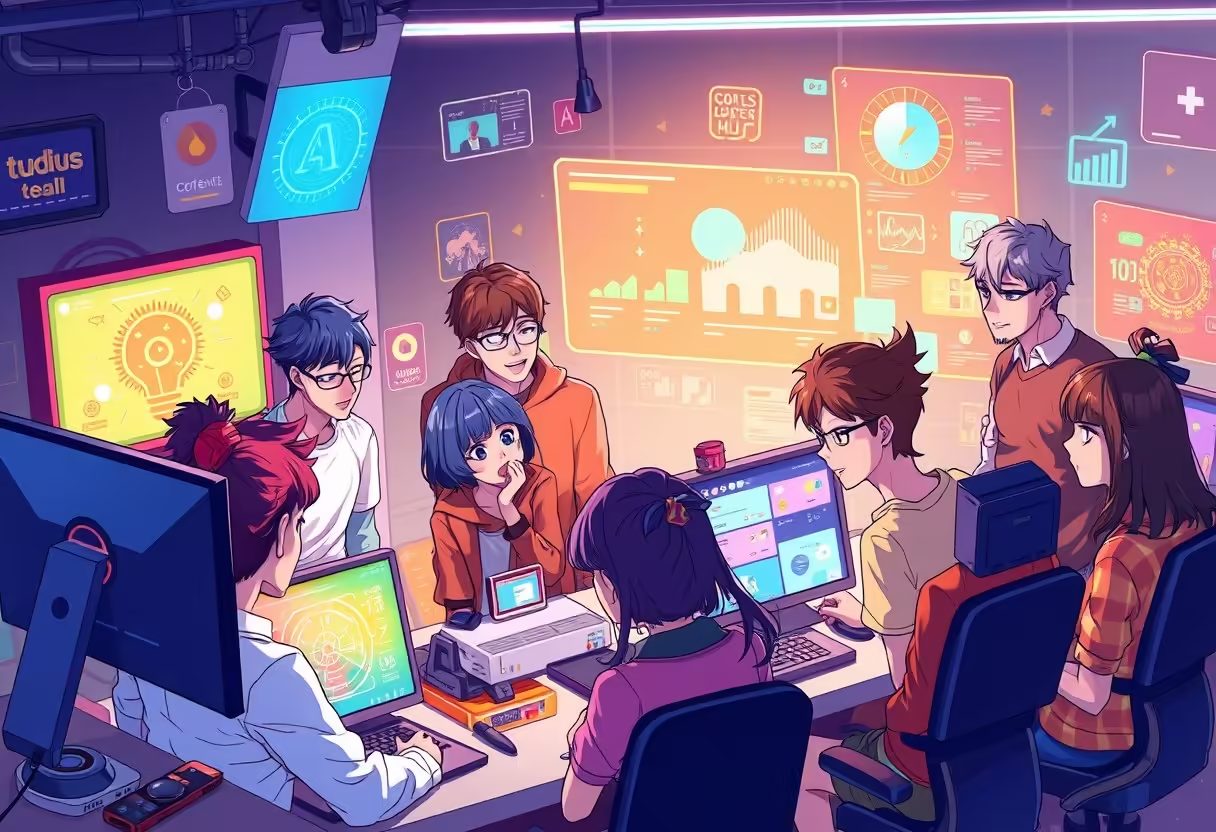As an affiliate marketer, I’ve always been fascinated by the potential of AI to streamline content creation. So, I decided to put ChatGPT to the test and write an entire book using this powerful tool. In this guide, I’ll share my journey and provide a step-by-step approach to writing a book quickly and efficiently using ChatGPT. From choosing the right topic to structuring your content, I’ll reveal the secrets to success and debunk the myths surrounding AI-generated content. Get ready to learn how to harness the power of ChatGPT and write a book in under 3 hours!
>>> Lazy? Automate the whole process with this tool (Amazon bestsellers on Autopilot!!)

Demystifying the AI Craze
To understand the hype surrounding AI, I had to take a step back and look at the bigger picture. As an affiliate marketer, I’ve seen my fair share of exaggerated claims and overpromises. But when it comes to AI, the stakes are higher. The fear of job loss, the promise of effortless creativity, and the allure of easy money have created a perfect storm of misinformation.
As I investigated deeper into the world of AI, I realized that most people don’t understand the basics of machine learning and deep learning. They think AI is some kind of magic that can solve all their problems, but the truth is far more nuanced.
Understanding Machine Learning and Deep Learning
The key to understanding AI is to recognize that it’s not a single entity, but rather a collection of algorithms and techniques. Machine learning, for instance, focuses on developing algorithms that can learn from data and make decisions based on patterns and relationships. It’s like teaching a computer to recognize images or classify text.
Deep learning, on the other hand, is a specialized branch of machine learning that involves neural networks designed to mimic the human brain. These networks can handle vast amounts of unstructured data, making them perfect for tasks like image recognition, speech recognition, and natural language processing.
The Limits of Artificial Intelligence
One of the biggest misconceptions about AI is that it’s capable of thought and creativity. The truth is, AI is just a sophisticated tool that can process and generate data, but it lacks the essence of human intelligence. It can’t smell, feel emotions, or dream like humans do.
Every output generated by ChatGPT or other LLMs is a refined rearrangement of past data, processed through neural networks. It’s like a cinematographic concept, where many static images are rolled together to create the illusion of movement. But beneath the surface, there’s no omniscient entity, no Skynet, and no incubation of The Matrix.
To put it simply, AI is not capable of pure thought or creativity. It’s a tool that can generate text, images, or music, but it’s limited by its programming and data. It’s not a replacement for human intelligence, but rather a powerful assistant that can augment our abilities.
However, this doesn’t mean AI can’t have a significant impact on our lives. It can take away jobs, create new forms of art, and generate meaningful text. But we need to approach AI with a critical eye, recognizing both its potential and its limitations. We need to be aware of the hype and the misinformation that surrounds AI, and focus on using it as a tool to augment our abilities, rather than replacing them.

How to Write a Book with ChatGPT
There’s a lot of hype surrounding ChatGPT and its ability to generate human-like text. As someone who’s worked with ChatGPT daily, I’ve learned that it’s not a magic solution, but rather a powerful tool that can help you write faster and more efficiently. In this chapter, I’ll share my step-by-step guide on how to write a book using ChatGPT.
Before we dive in, it’s vital to understand that ChatGPT is best suited for non-fiction content. Novels are out of the question, at least for now. With that in mind, let’s get started!
Choosing the Right Topic
One of the most critical steps in writing a book with ChatGPT is choosing the right topic. You can’t just ask ChatGPT to write a bestseller without giving it a clear direction. I knew I wanted to write a parody, so I needed a topic that was popular, had a catchy title, and was easily structurable. After some brainstorming, I landed on parodying Jordan Peterson’s 12 Rules for Life: An Antidote to Chaos. This topic had all the characteristics I was looking for: it was a popular book, had a catchy title, and was easily breakable into lists and bullet points.
This topic also gave ChatGPT the chance to show what it learned from its enormous training data and from its interactions with users. I was excited to see how ChatGPT would perform, and I’m sure you are too!
Structuring Your Prompt for Success
Now that we have our topic, it’s time to structure our prompt. An effective prompt is crucial when working with ChatGPT. You can’t just ask it to write a book without giving it clear instructions. I knew I had to give ChatGPT a clear direction, so I structured my prompt to include the topic, tone, and style I was aiming for.
Your prompt should be specific, concise, and clear. Don’t leave room for misinterpretation. Give ChatGPT a clear direction, and it will reward you with high-quality content. In my case, I wanted to write a parody, so I had to give ChatGPT a clear understanding of what that meant. I’ll dive deeper into structuring your prompt in the next section.
When structuring your prompt, remember to keep it concise and to the point. ChatGPT can only process so much information at a time, so make sure you’re giving it a clear direction. Don’t overload it with too much information, or you’ll end up with subpar results. Keep it simple, and ChatGPT will do the rest.
Factors to Consider When Writing with ChatGPT
All writers who venture into the world of AI-generated content should be aware of the limitations and potential pitfalls of using ChatGPT. While this powerful tool can significantly speed up the writing process, it’s vital to consider the following factors to ensure the quality and authenticity of your work.
When using ChatGPT, you should keep in mind the following key aspects:
- Context and understanding: ChatGPT’s responses are generated based on patterns and associations in the data it was trained on. Therefore, it’s crucial to provide clear and specific prompts to get relevant and accurate results.
- Tone and style: AI-generated content may lack the personal touch and emotional depth that human writers bring to their work. Thou must be mindful of the tone and style you want to convey in your writing and adjust your prompts accordingly.
The Importance of Suffering and Soul in Art
Clearly, the value of art lies not only in its technical execution but also in the emotional resonance and personal experience that the creator brings to the table. When working with ChatGPT, it’s vital to acknowledge that AI-generated content may lack the soul and suffering that make human art so relatable and impactful.
While ChatGPT can produce well-structured and informative content, it cannot replicate the emotional depth and personal experience that human writers bring to their work. As a writer, you must find ways to infuse your AI-generated content with your own personality, emotions, and experiences to make it more authentic and engaging.
Overcoming the Challenges of AI-Generated Content
Suffering from the limitations of AI-generated content is a common experience for many writers. However, by acknowledging these challenges and finding ways to overcome them, you can produce high-quality content that resonates with your audience.
AIGenerated content may lack the emotional depth and personal experience that human writers bring to their work. To overcome this challenge, you must find ways to infuse your AI-generated content with your own personality, emotions, and experiences. This can be achieved by providing clear and specific prompts, editing and refining the generated content, and adding your own personal touches to make it more authentic and engaging.

Tips for Working with ChatGPT
For a successful collaboration with ChatGPT, it’s vital to understand its capabilities and limitations. Here are some tips to help you work efficiently with the AI:
- Set clear goals and expectations: Define what you want to achieve with ChatGPT, and be realistic about its capabilities.
- Provide structured prompts: Give ChatGPT specific, well-structured prompts to ensure it generates relevant and accurate content.
- Review and edit output: Always review and edit the generated content to ensure it meets your standards and requirements.
- Use ChatGPT as a tool, not a replacement: Remember that ChatGPT is a tool designed to assist, not replace, human creativity and judgment.
Perceiving ChatGPT as a collaborator rather than a replacement will help you achieve better results and avoid potential pitfalls.
Setting Realistic Expectations
Realistically, ChatGPT is not a magic wand that can produce perfect content without any effort from your side. It’s vital to understand its limitations and capabilities to set achievable goals.
By setting realistic expectations, you’ll avoid disappointment and frustration, and instead, focus on leveraging ChatGPT’s strengths to augment your productivity and creativity.
Effective Communication with the AI
You need to communicate effectively with ChatGPT to get the desired results. This means providing clear, concise, and structured prompts that guide the AI’s output.
To communicate effectively, you should also understand how ChatGPT processes language and generates content. This will help you craft prompts that elicit the best possible responses from the AI.
To ensure effective communication, it’s crucial to be specific, concise, and clear in your prompts, and to provide context and examples when necessary. By doing so, you’ll increase the chances of getting high-quality output from ChatGPT.
The Power of Learning by Doing
Not everyone learns by reading or listening. Sometimes, the best way to understand a concept is to dive right in and start doing it. This is especially true when it comes to working with AI tools like ChatGPT. While I could have spent hours reading about how to use ChatGPT to write a book, I knew that the best way to learn was to simply start doing it.
This approach not only helped me to learn the ins and outs of ChatGPT, but it also allowed me to identify its limitations and constraints. By putting ChatGPT to the test, I was able to see firsthand what it could and couldn’t do, and adjust my approach accordingly.
My Experience with ChatGPT on Twitch
Leveraging the power of learning by doing, I decided to take my experiment to the next level by streaming my process on Twitch. This added an extra layer of complexity, as I had to not only figure out how to use ChatGPT to write a book, but also how to communicate my thought process to a live audience.
This experience was both exhilarating and terrifying. I had to think on my feet, troubleshoot issues in real-time, and be comfortable with the possibility of failure. But it was also incredibly rewarding, as I was able to connect with my audience and get immediate feedback on my progress.
What I Learned from the Process
With every step of the process, I learned something new about ChatGPT and its capabilities. I learned that having a clear plan and structure was crucial to getting the most out of the tool. I learned that well-crafted prompts were key to getting high-quality output. And I learned that human oversight and editing were necessary to ensure that the final product was coherent and engaging.
To take it a step further, I realized that the true value of ChatGPT lay not in its ability to generate text, but in its ability to augment and accelerate human creativity. By working together with ChatGPT, I was able to tap into its vast knowledge base and generate ideas that I may not have thought of on my own. This collaboration allowed me to produce a high-quality book in a fraction of the time it would have taken me to do it alone.
The Future of Writing with AI
Many experts predict that AI-generated content will revolutionize the way we create and consume information. As someone who has successfully written a book using ChatGPT, I’m excited to explore the possibilities and implications of this technology.
The potential benefits of AI-generated content are vast. With the ability to process and analyze vast amounts of data, AI can help writers identify patterns, generate ideas, and even assist with research. This could lead to more efficient and effective writing processes, freeing up human writers to focus on high-level creative decisions.
The Potential of ChatGPT and Other LLMs
Possibly the most significant advantage of LLMs like ChatGPT is their ability to learn from vast amounts of data and generate human-like text. This has opened up new possibilities for content creation, from generating articles and blog posts to creating entire books. As these models continue to evolve, we can expect to see even more sophisticated applications of AI-generated content.
For example, LLMs could be used to generate personalized content, tailored to individual readers’ interests and preferences. This could lead to more engaging and effective content, as well as new opportunities for writers and content creators.
The Role of Human Creativity in AI-Generated Content
With the rise of AI-generated content, some have raised concerns about the role of human creativity in the writing process. While AI can generate text, it lacks the emotional depth, nuance, and originality that human writers bring to the table.
Plus, human writers are important for providing context, tone, and direction to AI-generated content. Without human oversight, AI-generated content can lack coherence, clarity, and relevance. As AI continues to evolve, it’s important that we find ways to balance the benefits of AI-generated content with the unique strengths of human writers.
In my experience, the most effective approach is to use AI as a tool, rather than a replacement for human creativity. By working together with ChatGPT, I was able to generate a high-quality book that leveraged the strengths of both human and AI capabilities. This collaboration allowed me to focus on high-level creative decisions, while ChatGPT handled the more mundane tasks of research and writing.
Conclusion
Considering all points, I must say that my experiment of writing a book using ChatGPT was an eye-opening experience. As an affiliate marketer, I’ve always been fascinated by the potential of AI in content creation, and this project allowed me to explore its capabilities firsthand. While ChatGPT is an incredibly powerful tool, I learned that it’s not a magic solution that can replace human creativity and effort entirely. Instead, it’s a collaborator that can augment our abilities and help us produce high-quality content faster and more efficiently.
To conclude, I hope that my step-by-step guide to writing a book with ChatGPT has been informative and inspiring for you. By following the principles I outlined, you too can harness the power of AI to create engaging and valuable content that resonates with your audience. Recall, the key to success lies not in relying solely on technology but in combining it with your own unique perspective, creativity, and perseverance. So, go ahead, take the leap, and see what amazing things you can accomplish with ChatGPT by your side!
Here are five FAQs about “How I Wrote an Entire Book Using ChatGPT: A Step-by-Step Guide to Writing Fast in Under 3 Hours”:
FAQ
Q: Can I really write a whole book with ChatGPT and become rich with it?
A: While it’s possible to write a book with ChatGPT, becoming rich with it is not guaranteed. The success of a book depends on various factors, including marketing, audience reception, and competition. However, with the right approach and a well-structured plan, you can create a high-quality book with ChatGPT that resonates with your target audience.
Q: What are the limits and constraints of ChatGPT and other Large Language Models (LLMs)?
A: ChatGPT and other LLMs have limitations when it comes to creativity, originality, and emotional depth. They lack human experiences, emotions, and consciousness, which are crucial for creating truly unique and impactful content. Additionally, LLMs are only as good as the data they were trained on, so they may not always understand nuances, context, and subtleties of human language.
Q: How do I choose the right topic for my book, and what makes a good prompt for ChatGPT?
A: Choosing the right topic involves considering your target audience, market trends, and your own expertise and interests. A good prompt for ChatGPT should be structured, specific, and clear, providing the AI with a clear direction and scope. This will help ChatGPT generate high-quality content that meets your expectations.
Q: Can I use ChatGPT to write fiction books, such as novels?
A: While ChatGPT can generate text, it’s not well-suited for writing fiction books, especially novels. Fiction requires creativity, imagination, and emotional depth, which are difficult to replicate with AI alone. Non-fiction content, such as instructional guides, essays, and informative articles, are more suitable for ChatGPT.
Q: How do I add “soul” and “suffering” to an AI-generated book?
A: Adding “soul” and “suffering” to an AI-generated book requires human touch and emotional investment. You can achieve this by sharing your personal experiences, emotions, and perspectives, and by being vulnerable and authentic in your writing. This will help create a connection with your audience and make your book more relatable and impactful.
















